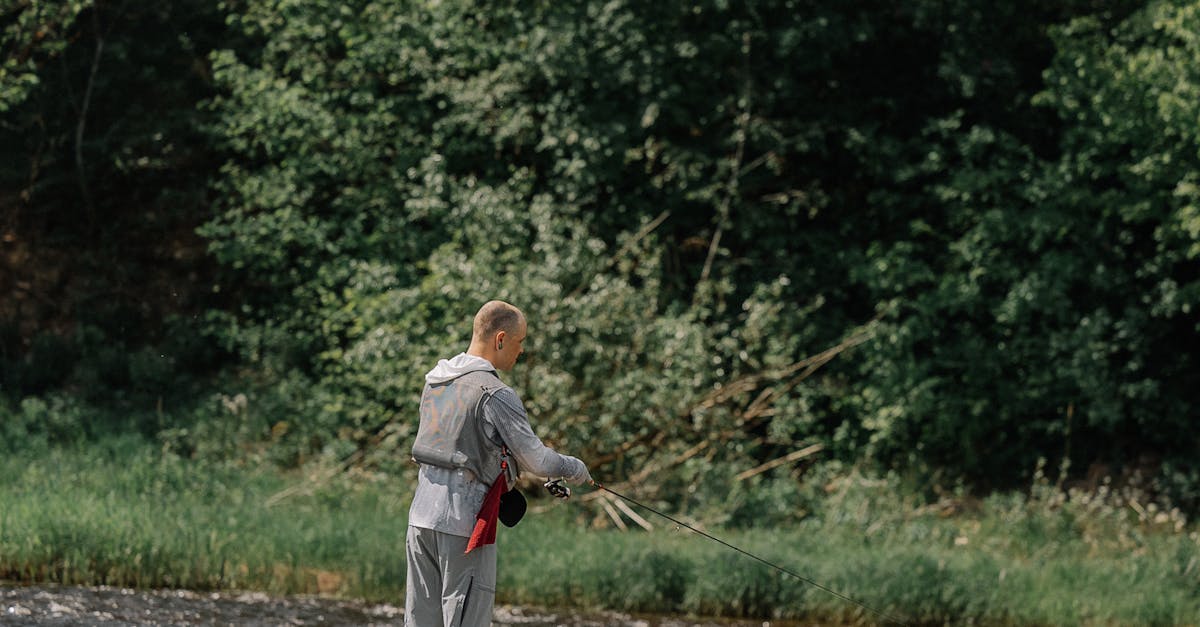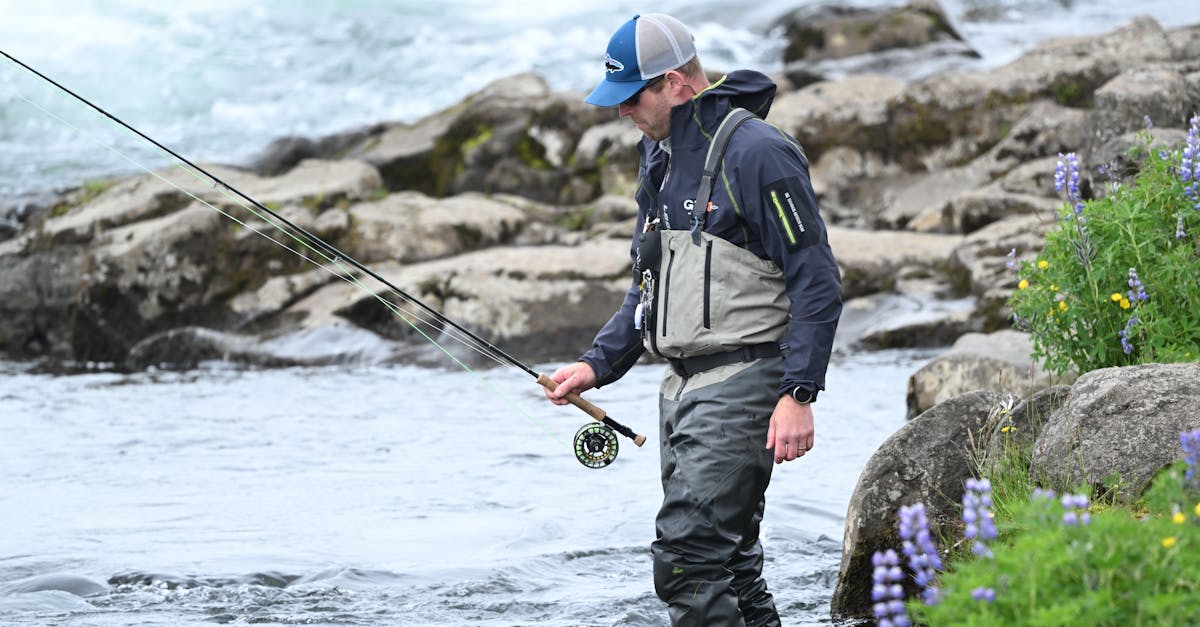
Table Of Contents
Aligning the Tip for Accurate Repair
To begin the repair process for a broken tip on a fishing rod, proper alignment of the tip is crucial for an accurate and successful fix. When aligning the tip, ensure that both the broken section and the main body of the rod are perfectly matched up. This alignment is key to maintaining the original functionality and performance of the fishing rod after the repair is complete. By taking the time to align the tip correctly, you set the foundation for a strong and durable fix that will withstand the rigors of fishing.
Alignment is not only about positioning the broken tip back in place but also about ensuring that it sits at the correct angle relative to the rest of the rod. This step is essential to guarantee that the repaired tip will guide the fishing line smoothly during casting and reeling. By paying attention to the alignment during the Fishing Rod Repair process, you increase the likelihood of restoring the rod to its original state, allowing you to continue enjoying your fishing expeditions without any hindrance.
Ensuring correct positioning of the broken tip
When it comes to the crucial step of ensuring the correct positioning of the broken tip during a Fishing Rod Repair, precision is paramount. A slight misalignment in the placement of the tip can lead to issues in the rod's performance and affect your overall fishing experience. To tackle this challenge effectively, carefully bring the broken pieces together and ensure they fit snugly without any gaps. Pay close attention to the alignment of both parts to guarantee a seamless connection. Once you are confident in the alignment, proceed with the next step of repairing the broken tip to restore the functionality of your fishing rod.
Proper alignment is the cornerstone of a successful repair when fixing a broken fishing rod tip. Take the time to double-check the positioning of the broken pieces before applying any adhesive. The alignment should be straight and inline with the rest of the rod to maintain its structural integrity. Remember, a well-aligned repair job not only enhances the aesthetics of the fishing rod but also contributes to its durability and performance on the water. By investing effort in ensuring the correct positioning of the broken tip, you set the foundation for a reliable and sturdy fix that will withstand the demands of your angling adventures.
Curing and Setting the Adhesive
Before proceeding with curing and setting the adhesive for your Fishing Rod Repair, ensure that the broken tip is perfectly positioned in alignment with the rod. A misaligned tip will lead to uneven stress distribution and potentially compromise the fix. Once properly aligned, apply a generous amount of adhesive to the broken tip, making sure to cover the entirety of the surface that will be reattached.
After the adhesive has been applied, hold the broken tip firmly against the rod and allow sufficient time for it to dry completely. This step is critical to ensure a strong and durable bond between the two pieces. Rushing the drying process may result in a weak fix that could break upon regular use. Be patient and allow the adhesive to cure fully before testing the repaired Fishing Rod Tip.
Allowing sufficient time for the adhesive to dry
Once the broken fishing rod tip has been reattached using the appropriate adhesive, it is crucial to allow sufficient time for the adhesive to dry completely. Patience is key in this step of the Fishing Rod Repair process, as rushing it can jeopardize the strength and durability of the fix. The drying time needed can vary depending on the type of adhesive used, so it is important to refer to the manufacturer's instructions for the specific product.
Ensuring that the adhesive is allowed ample time to dry will ultimately determine the success of the repair. A common mistake often made during Fishing Rod Repair is not providing enough drying time, which can lead to the tip coming loose again or compromising its strength during use. Therefore, following the recommended drying time is essential in guaranteeing a secure and long-lasting fix for the broken fishing rod tip.
Testing the Repaired Fishing Rod Tip
Testing the repaired fishing rod tip is a crucial step in ensuring the effectiveness of the fix. To assess the strength and functionality of the repair, gently apply pressure to the tip and observe any signs of weakness or instability. It is essential to test the repaired fishing rod tip before using it for actual fishing activities to prevent any potential accidents or damages. By carefully examining the repair, you can determine if the adhesive has securely bonded the broken pieces back together, providing confidence in the stability of the tip during fishing endeavors. Fishing Rod Repair can be successful if the repaired tip withstands the applied pressure and shows no signs of loosening or detachment.
Furthermore, after conducting the initial stability test, proceed to perform a few practice casts with the repaired fishing rod tip. By simulating typical fishing movements, you can evaluate the durability of the fix under practical conditions. Observing how the repaired tip behaves during casting motions can reveal any remaining issues or weaknesses that may need to be addressed before fully relying on the fishing rod for extended use. Through these testing procedures, you can ensure that the fishing rod tip is securely repaired and ready to withstand the rigors of fishing activities.
Checking the strength and functionality of the fix
After allowing the adhesive to thoroughly dry and cure, the next crucial step in the process of Fishing Rod Repair is to check the strength and functionality of the fixed tip. Gently apply pressure to the repaired area to assess if it holds firmly in place. A secure tip will not display any movement or wobbling, ensuring the repair has been successful.
To further test the strength of the fix, carefully flex the rod where the break had occurred. A well-repaired tip should withstand the pressure without any signs of weakening or separation. Additionally, test the tip with a few light practice casts to confirm that it remains stable and functional. By conducting these tests, you can be confident in the quality of the repair and ready to use your fishing rod once again.
FAQS
Can a broken fishing rod tip be fixed?
Yes, a broken fishing rod tip can be fixed with the right tools and techniques.
What materials are needed to repair a broken fishing rod tip?
To repair a broken fishing rod tip, you will need a replacement tip, adhesive, a heat source, and possibly a small file or sandpaper for shaping.
Is it necessary to align the tip before repairing it?
Yes, aligning the tip is essential to ensure accurate repair and proper functioning of the fishing rod.
How long does the adhesive need to dry before testing the repaired fishing rod tip?
It is important to allow sufficient time for the adhesive to dry completely, typically 24 hours, before testing the repaired fishing rod tip.
Can I test the strength and functionality of the repaired fishing rod tip after fixing it?
Yes, after the adhesive has dried, you can test the strength and functionality of the repaired fishing rod tip by checking its alignment and performing some light casting to ensure it holds up under pressure.

